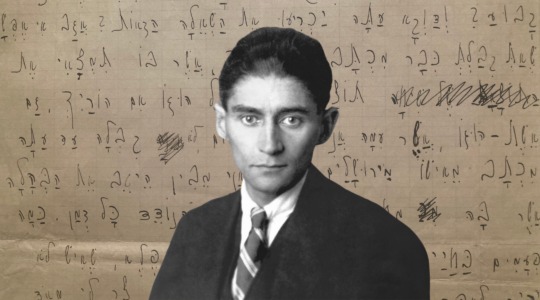There are some skeletons in their closets.
As in the aerodynamically sleek sleds that send athletes hurtling at fantastic speeds down a twisty, icy track — face down, head first, their chin only a few inches above the ice.
Three Americans are trying to slide their way into Olympic history by representing Israel as the country attempts to field its first-ever skeleton squad at the upcoming Winter Games in Pyeongchang, South Korea. The three are competing for one spot, should their times qualify for the Games, which open Feb. 9.
The three sliders are:
* A.J. Edelman, 26, a native of Boston who has represented Israel in international skeleton events for four years.
* Larry Sidney, 43, from Lake Tahoe, Nev., who worked as a teacher before putting his career on hold to train for the Olympics.
* Joel Seligstein, 32, a software engineer-turned-Olympic-hopeful who lives in California when he’s not racing around the world.
A fourth U.S. athlete, Brad Chalupski, 33, a native of Marlboro, N.J., was in the running until suffering a serious injury last year.
The three remaining men are friendly competitors, often training, traveling and living together on the road, said David Greaves, president of the Israeli Bobsled and Skeleton Federation, who led an unsuccessful attempt to get an Israeli bobsled team into the Olympics a decade ago.
“There is support for each other,” although “they all fight against each other for one spot,” said Greaves, who lives in Winnipeg, where he formerly worked as a fundraiser for the Canadian city’s Jewish federation.
All three, who have Israeli citizenship and have lived varying lengths of time in Israel, have raised the visibility there of the obscure winter sport and raised the profile of Israel on the international skeleton circuit, Greaves said. (The piece of equipment takes its name from its bony appearance, reminiscent of a human skeleton.) “They shed a different light on Israel.”
The three, who privately raise funds to pay for their training and competing, chose to compete for Israel out of conviction, he said. “This is not just an easy path to get to the Olympic Games,” avoiding the higher level of competition in the U.S. “They have to truly love the State of Israel. They have to carry the flag, and represent the Jewish people.”
They will find out in late January whom, if any of them, will wear the blue and white of Israel on the skeleton track in South Korea.
Greaves helped design the uniforms, which are being created by a specialized manufacturer in Calgary; they feature the Israeli flag with its Magen David.
What if Israel does not earn a skeleton spot at the 2018 Games?
Edelman, who is Orthodox and has spoken about his unique sporting interest at day schools and other Jewish institutions, has indicated that he will keep sliding, Greaves said. Sidney plans to retire, while Seligstein will probably continue his athletic career, and Chalupski will return to the track.
And, Greaves said, he will go on trying to get Israel a skeleton spot in the Winter Games. One of the uniforms, he said, will appear in the Olympics. “It will be used in four years.”
The New York Jewish Week brings you the stories behind the headlines, keeping you connected to Jewish life in New York. Help sustain the reporting you trust by donating today.




